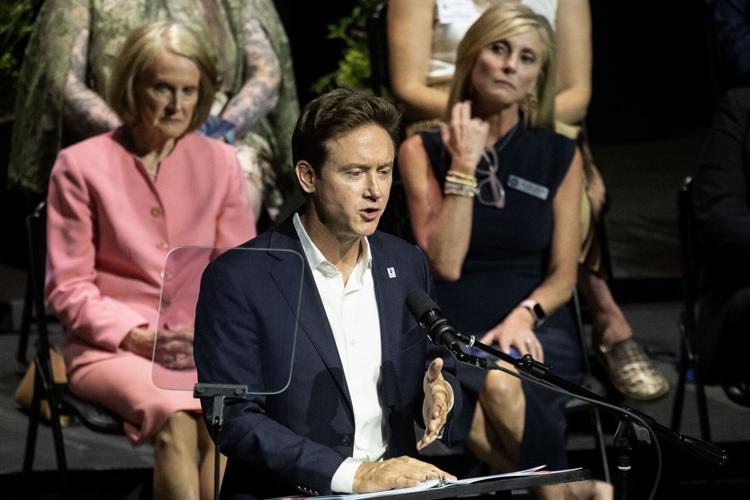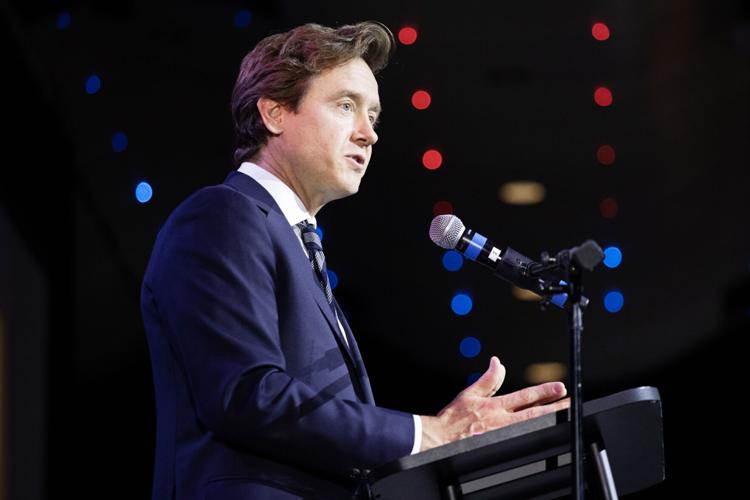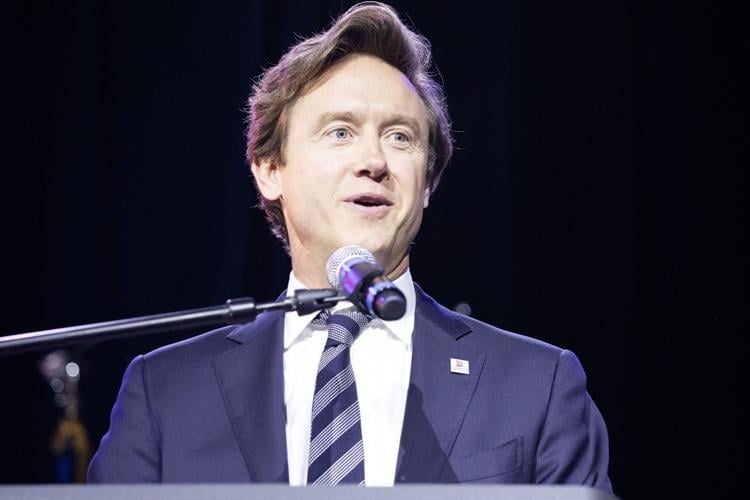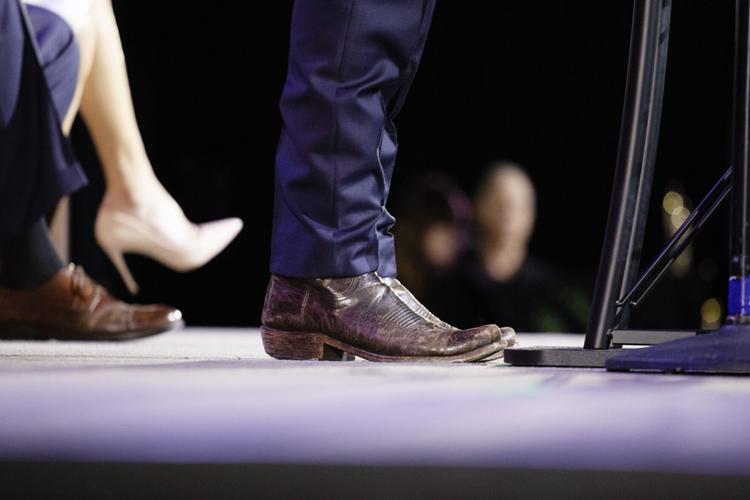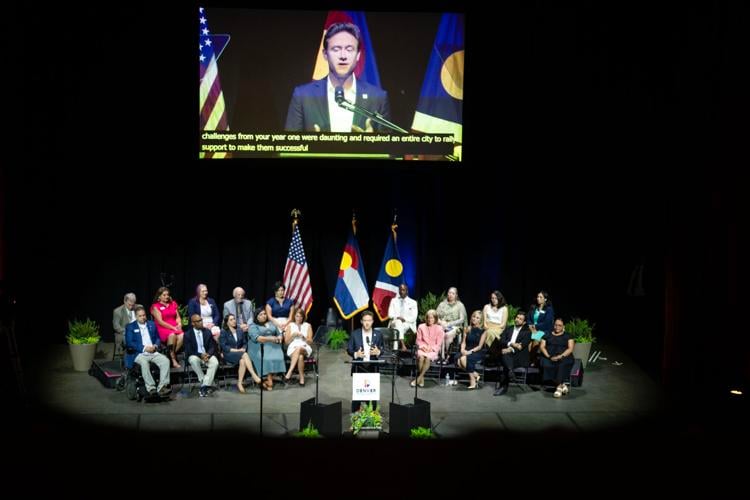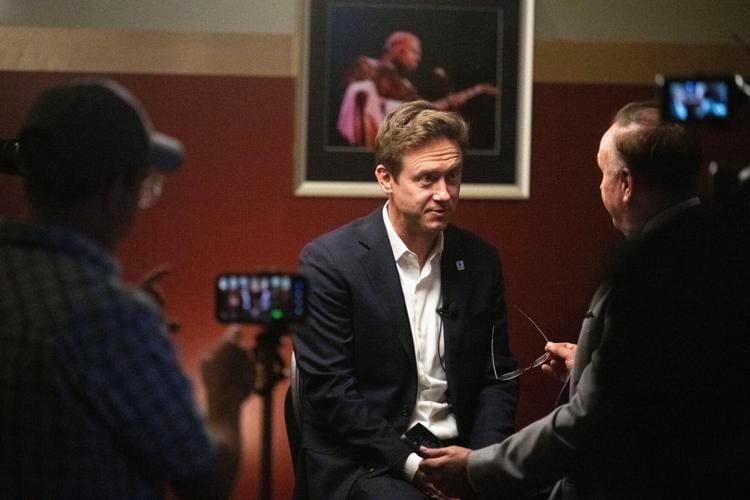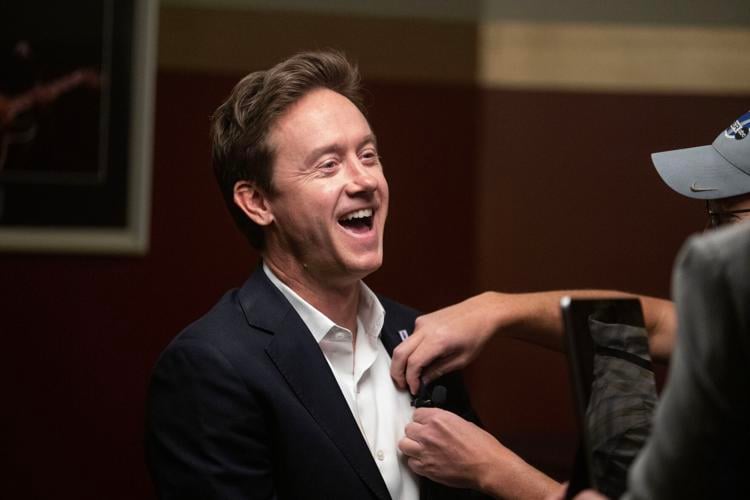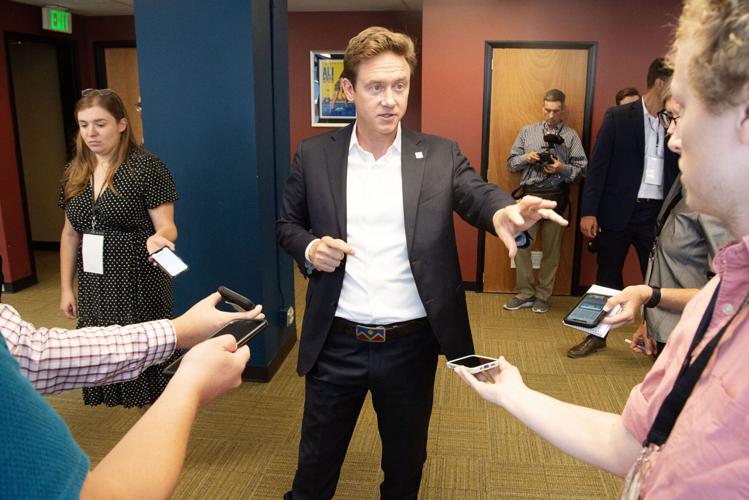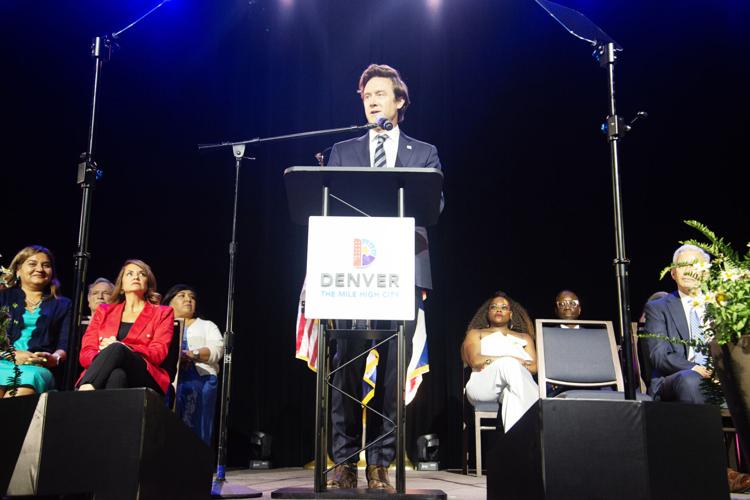States of the city: Comparing Mike Johnston in 2024 and 2025 | ANALYSIS
It’s been just over 24 months since Denver Mayor Mike Johnston took the oath of office as the city’s 46th mayor, and, in that time, the former Harvard-educated and once rural Mississippi school teacher has delivered two State of the City addresses.
His inaugural address, delivered on July 22 last year at the historic Paramount Theater, marked yet another ambitious campaign to solve the city’s woes, notably housing, public safety and a struggling downtown.
During his campaign for mayor, the then-candidate notably promised to end Denver’s homelessness crisis in his first term as mayor. Fresh from his electoral victory, when excitement among his supporters was palpable, he talked about a “new dream,” which became the bedrock for the slogan he later adopted to encapsulate his vision for the city — “vibrant Denver.”
For his second address, Johnston spoke from a platform inside the Seawell Ballroom at the Denver Center for the Performing Arts on July 21 and highlighted a checklist of successes tied to his initial vision for the city.
This time around, he adopted a more tempered tone, particularly on fiscal matters.
In the last two years, Johnston faced an illegal immigration crisis — which he defended as morally necessary but partly of the city’s own making; a homelessness crisis that shows no signs of abating, despite millions spent; a series of high-profile crimes in downtown Denver that rattled residents and businesses alike; and, now, flat revenue for the city.
The mayor and his allies, meanwhile, pointed to the reopening of the renamed 16th Street Mall — now just “16th Street;” decreases in “unsheltered” homelessness, the category referring to people sleeping under bridges and other public spaces; overall crimes trending downward; and major investments that he said would cement Denver’s position as an economic powerhouse.
This year, Denver is facing a looming $250 million budget deficit, soon to be punctuated by city staff layoffs.
What a difference a year can make.
Homelessness
Last year, Johnston wrapped his plans for a “vibrant Denver” into a series of folksy and heart-touching stories about Denver residents he had met and the struggles they endured.
In his 2024 address, he touted his efforts to house homeless people and plans afoot to move “more than 1,600 people off the streets and into transitional housing.” He promised to increase efforts to end street homelessness for veterans.
The city had been on track to spend more than $155 million on the crisis, the bulk of the money spent on converting former hotels into temporary shelters and building “micro-communities” — several areas that would house people in “tiny homes.”
As it turned out, that $155 million had been $65 million more than what the mayor said his campaign would cost.
“Now, at the halfway point,” Johnston said in his 2025 address, “we have done something historic. In the last two years, street homelessness in Denver has dropped by 45% — the largest multi-year decrease in unsheltered homelessness of any city in American history. We’ve closed every large encampment in the city and re-opened sidewalks to pedestrians and businesses — and we became the largest American city ever to end the cycle of street homelessness for veterans.”
Although fewer people are sleeping on the streets in Denver, the total number of homeless individuals in the city has grown, a new report showed.
This year, a total of 7,327 people were counted as homeless — a number that increased by 788 over 2024, according to the newest annual point-in-time count released by the Metro Denver Homeless Initiative.
As for housing, voters were less enthusiastic about Johnston’s campaign to generate $100 million annually to fund key programs.
Despite having no organized opposition and more than $2.4 million in support from Affordable Denver, 51.58% of voters said “no” to Ballot Issue 2R.
Downtown economy
In 2024, when Johnston launched his “Vibrant Downtown” initiative, he promised to make “the largest-ever investment in downtown without raising taxes” by expanding the Downtown Development Authority to fund various projects.
People liked the idea and, in November, more than 80% of voters chose to expand the Downtown Development Authority — originally created to fund Union Station’s 2014 restoration using tax-increment financing — to cover the rest of downtown Denver, generate $570 million, and pay for projects across the city core.
Once more, the mayor offered a grand vision, with help from the half-billion revenue source.
“By the next state of the city, 16th Street will be open from Union Station to the Pavilions, buses will be running, people will be strolling down our new broad sidewalks, brand new stores will be open, and a whole new generation of Denverites will be coming downtown to make a new generation of memories,” Johnston said.
This week, Johnston and the Downtown Development Authority board approved $100 million for projects aimed at revitalizing downtown Denver.
Johnston told Denverites in his 2025 State of the City address that clearing downtown of encampments was only the first step toward revitalization and that, with money from the development authority, the “first thing we did” was launch a dedicated downtown police unit with “horses, bikes, motorcycles, and foot patrols.”
It’s not the only big-ticket spending the mayor pushed for.
In February, the mayor announced a city initiative to pursue new borrowing, which his administration called the “Vibrant Denver Bond Program,” to fund $950 million in public improvements across the city.
Johnston faced criticism over the price of the bond package, as well as the list of proposed projects, with some calling the process “rushed” and some projects “cherry-picked” for the benefit of local professional sports teams.
The Denver City Council is expected to vote on the bond package on Monday.
On the economic development front, Johnston sought to tackle a perennial complaint by entrepreneurs — a bureaucratic hurdle they said has delayed projects and which, in turn, increased costs.
In April, Johnston signed his first-ever executive order to overhaul Denver’s permitting process, under which delays on the part of the city would mean refunding thousands of dollars of an applicant’s fees.
The order also consolidated 280 city employees across seven different departments under one office to accelerate the permitting process.
Public safety
Among Johnston’s many promises is to improve public safety and significantly reduce crime, also a consistent theme across both of his State of the City addresses.
In 2024, the mayor attributed reductions in auto theft to “license plate readers, easy vehicle registration, enhanced deterrence and swift investigation.”
The pilot program for those 111 solar-powered license plate readers was not renewed in 2025, with members of the City Council citing some advocates’ worries over privacy and data sharing for purposes of enforcing immigration laws.
Johnston also said the city was on track with its goal to hire 300 new police officers.
However, according to a performance audit by the city, Denver may be losing some of its top-qualified police and firefighter candidates due to problems within its own civil service hiring processes.
This year, the mayor cited improvements in the crime data.
“In 2025, Denver dropped our homicide rate by an astonishing 46%,” Johnston said. “Adjusting for population, our homicide rate this year is the lowest in the last decade. Auto theft is down by over 50% and catalytic converter theft has dropped by over 90%.
Johnston added there are more police officers “out walking beats, building relationships with our neighbors on ‘trust’ patrols.”
The trend in Denver has mirrored the decreases in violent crime in Colorado. In Denver, crimes through the first half of this year — notably murders, auto thefts, robberies, and burglaries — are lower compared to previous years, though some categories remained above 2020 levels and the downward trend has not been even, with some city districts seeing increases in murder and aggravated assaults.
State and local officials earlier speculated that what drove the car theft trend down was a combination of factors. Notably, they cited a new state law as having had a significant effect on curbing car thefts, especially in the Denver metro area, which accounted for almost 40% of all stolen vehicles. At the urging of Gov. Jared Polis, lawmakers in 2023 passed a law that made all car thefts a felony, decoupling the severity of the crime from the value of the car and tying it instead to behavior so that the penalty becomes more severe with repeat offenders.
In his address, Johnston touted the work of the city police.
“And in the midst of turbulent political times, our officers have stood up for freedom of speech and kept the peace at more than 200 demonstrations — both large and small — over these last two years,” he said.
Immigration crisis
Shortly after Johnston entered office in 2023, a crisis engulfed the city, when more than 30,000 immigrants arrived after illegally crossing the nation’s southern border.
In his 2024 State of the City address, Johnston told the story of Daniela, a teacher in Venezuela who left her home, along with her husband and 9-year-old daughter, and walked 3,000 miles to America, eventually being bused to Denver.
He framed Denver’s response as a city pulling together to aid immigrants arriving in the dead of winter. The election of President Donald Trump soon put Johnston and his “welcoming city” into the national spotlight.
The city’s — and Colorado’s — “sanctuary” policies have been at odds with the Trump administration’s emphasis on shutting down the border and deporting foreign nationals unlawfully staying in the U.S.
Meanwhile, Johnston has suggested being willing to go jail in defense of the city’s immigration policies and at one point said he would deploy the local police to stop immigration agents, a statement he later walked back.
In March, Johnston, along with Boston Mayor Michelle Wu, Chicago Mayor Brandon Johnson and New York Mayor Eric Adams, was summoned to appear before the U.S House Oversight and Government Reform Committee to explain the city’s “sanctuary jurisdiction” policies.
Johnston did not emphasize his support for immigrants in his 2025 speech, although he wove in stories of immigrant contributions.
What’s next for 2026?
As for what’s in store for next year, Johnston said it’s something called “learned hopefulness.”
“We will continue to dream big and deliver big things, and do so in a way that preserves and protects the identity of those neighborhoods and the people that built them,” he said.
That also likely includes more “catalytic” spending on projects to create jobs and fuel growth.
“We will do that through community-led growth, like the creation of the city’s largest park in more than a century, welcoming a women’s soccer franchise and new purpose-built stadium on land that has long been vacant, the investing in the Stock Show triangle in partnership with GES residents, and yes, we will get a long-term deal to keep the Denver Broncos here in Denver,” Johnston said.
He added: “This is the work that lies ahead in the next two years. We want a city where everyone feels at home, where we grow strong and wiser and more connected because we embrace the differences of our stories, our beliefs, and our histories. That is our dream for Denver. That is our capital of the New West.”






